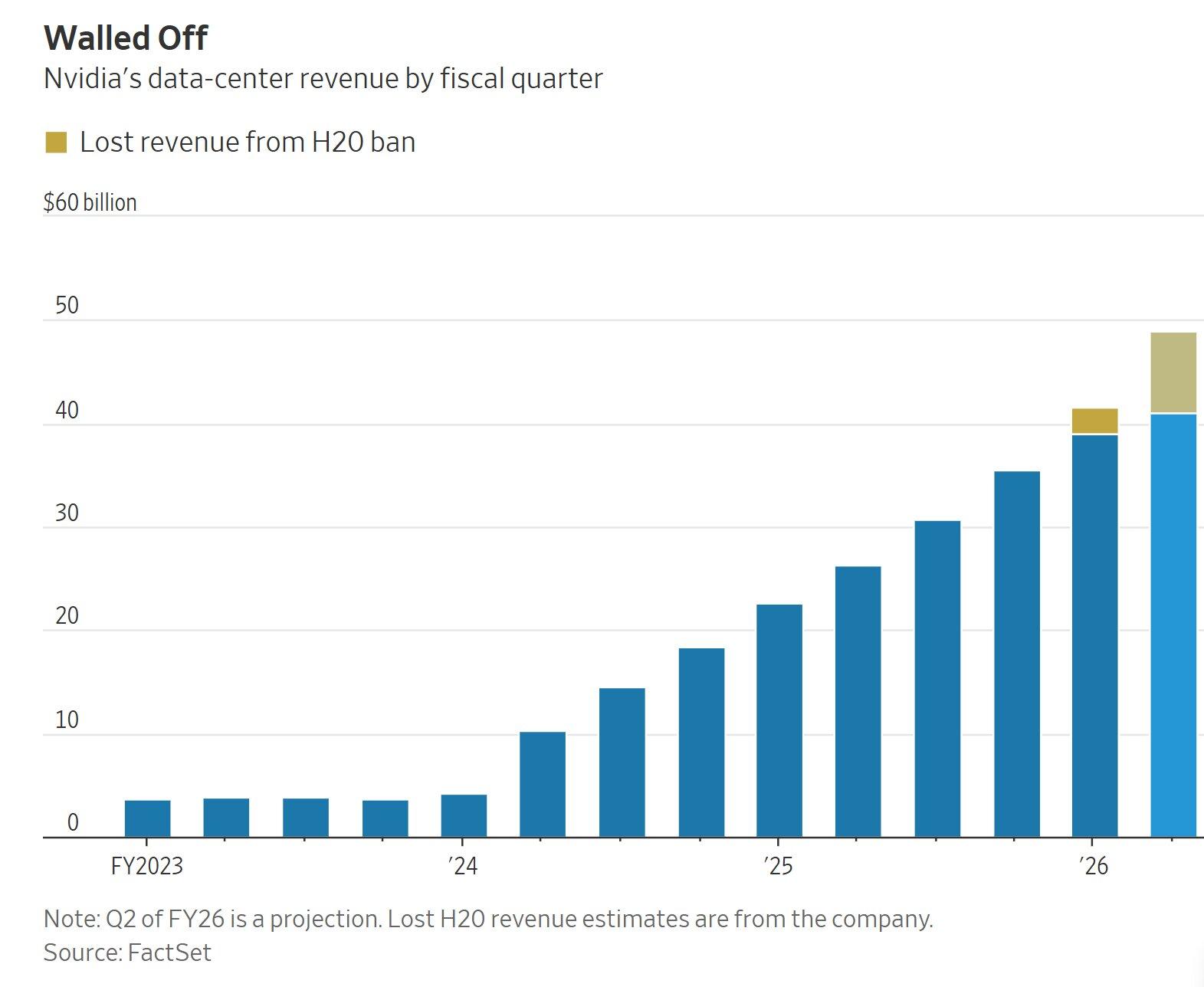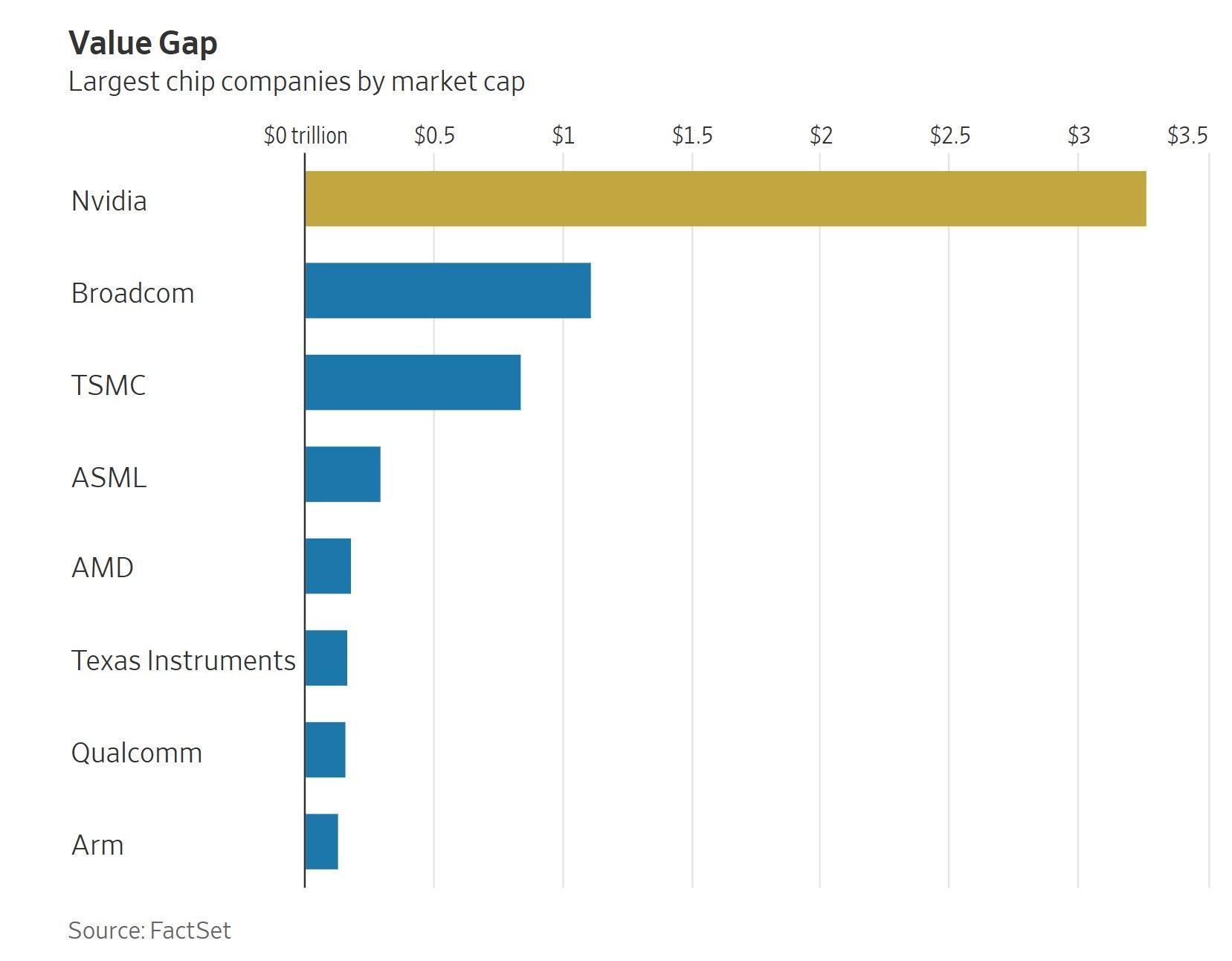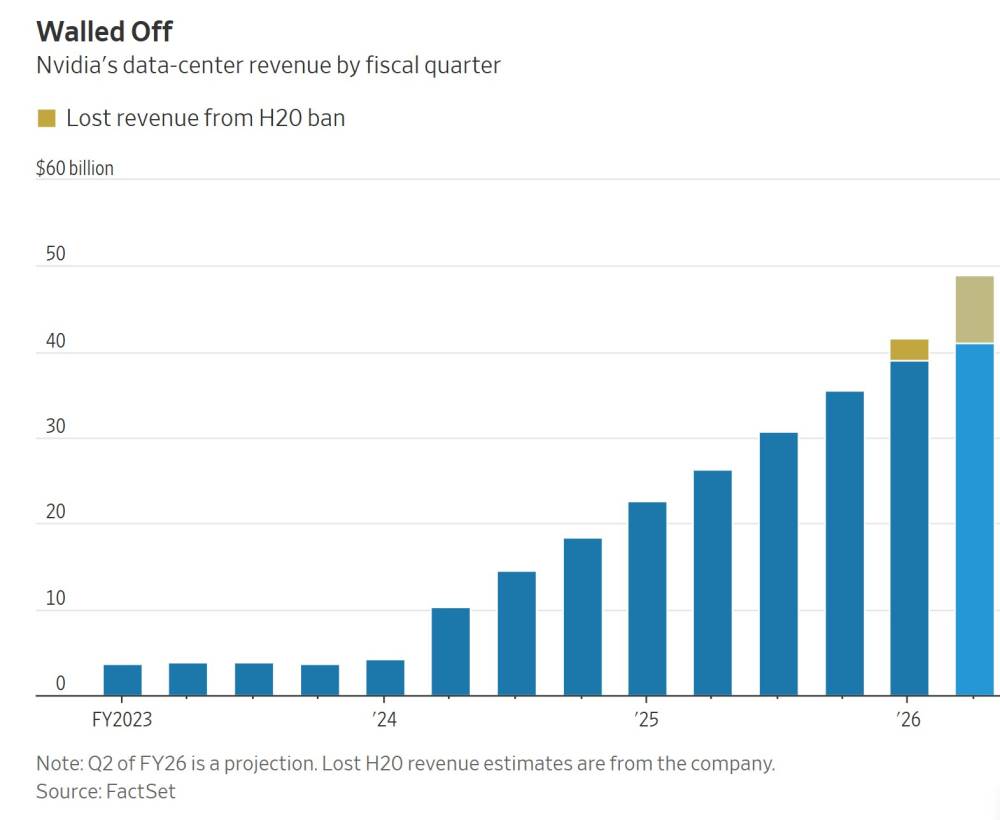Nvidia CEO Jensen Huang at a news conference in Taipei last month. Photo: i-hwa cheng/Agence France-Presse/Getty Images



Nvidia không thể rời bỏ thị trường Trung Quốc vì đây là nền kinh tế lớn thứ hai thế giới, chiếm khoảng 14% doanh thu của hãng trong năm tài chính gần nhất, tương đương 17,1 tỷ USD.
Thị trường AI Trung Quốc dự kiến đạt giá trị 50 tỷ USD trong 2-3 năm tới, là cơ hội tăng trưởng lớn mà Nvidia khó có thể bỏ qua nếu muốn đạt mục tiêu doanh thu 200 tỷ USD năm 2025 và 300 tỷ USD năm 2028.
Lệnh cấm xuất khẩu chip H20 sang Trung Quốc khiến Nvidia mất khoảng 2,5 tỷ USD doanh thu trong quý kết thúc tháng 4/2025 và dự kiến mất thêm 8 tỷ USD trong quý tiếp theo, do chip H20 chỉ thiết kế riêng cho thị trường này.
CEO Jensen Huang nhấn mạnh Trung Quốc có tới 50% nhà phát triển AI toàn cầu, nếu Nvidia bị loại khỏi thị trường này, các tài năng AI sẽ chuyển sang sử dụng nền tảng đối thủ, đe dọa vị thế dẫn đầu của Mỹ trong ngành AI.
Nvidia đang phát triển chip mới cho Trung Quốc nhằm đáp ứng quy định xuất khẩu của Mỹ, nhưng chưa có sản phẩm sẵn sàng và dự báo doanh thu chip mới khó bù đắp hoàn toàn khoản mất mát từ H20.
Việc Mỹ siết chặt kiểm soát xuất khẩu chip AI sang Trung Quốc đã thúc đẩy các công ty nội địa như Huawei tăng tốc phát triển chip AI, nâng tỷ lệ tự cung ứng chip AI của Trung Quốc từ 34% hiện nay lên 82% vào năm 2027.
Nếu Nvidia không duy trì hiện diện, các đối thủ nội địa sẽ chiếm lĩnh thị trường, và Trung Quốc sẽ đẩy mạnh phát triển công nghệ tự chủ, giảm phụ thuộc vào Mỹ.
Nvidia lập luận rằng việc bán chip AI cho Trung Quốc không chỉ mang lại doanh thu mà còn đóng góp thuế, tạo hàng nghìn việc làm tại Mỹ. Nếu bị loại khỏi thị trường này, Mỹ sẽ mất đi lợi thế cạnh tranh công nghệ dài hạn.
Chính quyền Mỹ vẫn duy trì các hạn chế xuất khẩu với lý do an ninh quốc gia, khiến Nvidia phải liên tục điều chỉnh sản phẩm, chiến lược và vận động hành lang để tìm kiếm cơ hội trở lại thị trường Trung Quốc.
Dù doanh thu toàn cầu của Nvidia vẫn tăng mạnh nhờ nhu cầu AI tại Mỹ, châu Âu, Trung Đông, nhưng sự vắng mặt tại Trung Quốc sẽ giới hạn tiềm năng tăng trưởng dài hạn và tạo điều kiện cho các đối thủ nội địa vươn lên.
📌 Nvidia không thể bỏ thị trường Trung Quốc vì đây là thị trường AI trị giá 50 tỷ USD, chiếm 14% doanh thu và là nơi tập trung 50% nhà phát triển AI toàn cầu. Nếu rút lui, Nvidia sẽ mất lợi thế cạnh tranh, doanh thu và tạo điều kiện cho các đối thủ nội địa như Huawei vươn lên mạnh mẽ.
https://www.wsj.com/tech/ai/why-nvidia-cant-just-quit-china-18e494f0
#WSJ


